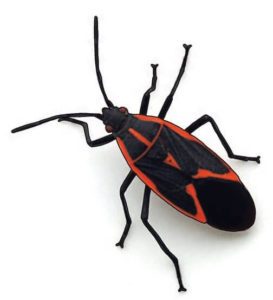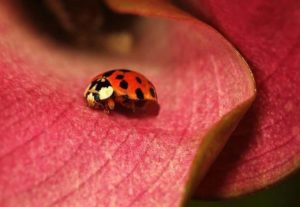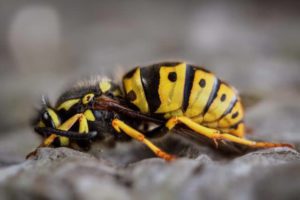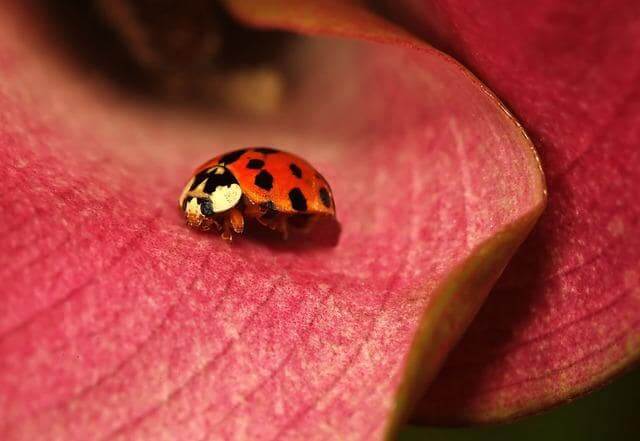Learn How These Fall Pests Come Out of Hiding in Winter and Spring
Picture this: you’ve set up your dinner table with the nice china for a special occasion. After months of speculation of whether you should have your in-laws over with COVID and everything else going on, you make the plans with the intention of postponing or calling off if anything comes up. With a sigh of relief, nothing does, and you can have your dinner like normal.
Soon the guests arrive, about 15 minutes late like normal, but they are here and that’s all that matters. You take coats and put them in the closet or on the guest bed. You lead them to the living room for drinks and conversation while the food finishes cooking. You stop in your tracks. Why are there Boxelder bugs in my windows now? you wonder. You hope your guests don’t notice while you bring them their drinks and check on dinner one last time.
Has something similar happened to you? It happens to the best of us. Fall pests find ways into your homes to survive the winter. It’s just how it is. But, it doesn’t have to be for your home.
Table of Contents:
- How to identify fall pests
- Over-wintering in your home or business
- How to eliminate fall pests now
- How to prevent these invading fall pests in the future
- Next steps
- Conclusion
How to Identify Fall Pests
Boxelder Bugs

Boxelder bugs are oblong in shape, primarily black or dark brown, red vein-like markings along their wings, which appear in distinct lines on their backs when their wings are closed.
They congregate near or on Boxelder, Maple, and Ash trees, consuming mainly seeds, but also leaves of these trees. They also lay their eggs on these trees. Once the nymphs hatch from the eggs, they are bright red in color.
While Boxelder bugs are harmless, they can emit a pungent odor and foul-tasting secretion to discourage any predators from killing them.
Boxelder bugs love the sun. When these fall pests cluster together on homes and other surfaces it’s called “sunning”. While sunning on siding of homes, they begin to search for entry points.
Asian Lady Beetles (Lady Bugs)

Asian lady beetles range in color tones among red, orange, and even yellow with black spots adorning their wings. These spots have nothing to do with their age.
Did you know worldwide there are more than 6,000 species of these lady bugs?
Asian beetle eggs are very tiny and are typically inserted into leaves or other parts of trees, sometimes even into aphid colonies so the Asian beetle larvae will have a direct food source. As the fall season progresses and food becomes more scarce, the female’s eggs become increasingly more infertile. Once the fertile eggs hatch, the larvae is white.
Similar to the Boxelder bug, Asian lady beetles exude a substance that has a harsh odor and foul taste when injured or squished. Except the way they exude the substance is unique: the substance secretes from between the joints of the Asian beetle’s exoskeleton. Even though the larva doesn’t have the exoskeleton formed yet, it can still secrete the substance if injured or squished.
And just like the Boxelder bug, Asian beetles cannot withstand Minnesota’s brutal winters, forcing these fall pests to seek shelter in mid- to late-fall. They fly indoors or squeeze into cracks and crevices along the south facing side of a house or building.
Stinging Insects
 Hornet, wasp, and yellow jacket colonies consist of one queen and many, many worker drones. The queen, while female, doesn’t have the ability to fertilize the eggs without the workers’ help. The drones seek food items for the queen, which is why they often build their nest close to human habitation.
Hornet, wasp, and yellow jacket colonies consist of one queen and many, many worker drones. The queen, while female, doesn’t have the ability to fertilize the eggs without the workers’ help. The drones seek food items for the queen, which is why they often build their nest close to human habitation.
Common areas for hornets and wasps to build nests are:
- Roof overhangs
- Soffit, facia, and gutter area
- Inside exterior walls through a small opening in the siding, or a crack in the foundation
- Hanging on tree branches
- Sometimes in the ground
- And other places
Stinging insects are more than just nuisance fall pests. If someone is allergic to wasp or hornet stings, then these pests are not only bothersome, but dangerous. Wasp and yellow jacket stings are more painful than dangerous, typically. Hornets are the more aggressive type of stinging insect, which leads to their sting being more dangerous as well as painful.
The reason for these painful stings is because hornet stings have more acetylcholine in their venom than other stinging insects. Acetylcholine is an organic chemical that exists in the brain and body of many organisms, bugs, and animals, which transmits messages to nerve endings of neurons, muscle cells, and gland cells. This message that is transmitted involves pain.
While there are many types of hornets and wasps that forage, build nests, and pester residents in Minnesota, their life cycles and routines are somewhat similar. Wasps and hornets of different types build different nests, but their worker drones that are preparing to be queen for the following year have to protect themselves. They seek shelter amid exterior walls of homes and businesses.
Over-wintering in Your Home or Business
So far this article has pointed out that Boxelder bugs, Asian lady beetles, hornets, wasps, and yellow jackets all seek shelter from the colder temperatures. Once these bugs get inside exterior wall voids, they hibernate. They fall asleep. This is something natural to their body’s defense systems and life cycles.
These fall pests naturally wake up whenever their bodies register a certain temperature. This is meant to ensure they don’t wake up until spring when they can rebuild nests and prepare for another year of life. However, the temperatures could rise during the winter, giving a false spring for a couple of days, or the interior heat of the home or business has made its way to the wall voids and to these insects’ systems.
When these insects wake up, they come out into the warmth of the house and try to escape by (or are attracted to) the windows. This is why you may see Boxelder bugs or Asian lady beetles around your south-facing or warmest windows in the winter or early spring.
How to Eliminate Fall Pests Now
There isn’t much to do to eliminate all fall pests that have gotten in your home right now, because not all of them will have woken up. You have to wait it out. The most a pest professional could do would be to treat around the windows with a residual product that these insects would walk over and it would kill them in a matter of hours.
In the meantime, while you are waiting for them all to wake up, we recommend vacuuming up these fall pests. This is simple and costs you nothing.
In the spring, we recommend an exterior spray as they wake up and crawl out from your exterior wall voids they will crawl over it and it will kill them within a couple of hours.
How to Prevent These Invading Fall Pests in the Future
Pest professionals strongly recommend a fall exterior spray. These sprays have a direct kill agent when wet, so whenever one of these fall pests comes into contact with it while wet they will die within a few seconds. Once the product dries (takes about an hour or less) the residual chemical stays adhered to the siding of the structure for the season (about 2-3 months).
Whenever one of these fall pests lands or walks on the dried product, it will die within 8 to 12 hours. This means these pests won’t have enough time to crawl inside your home to over-winter.
Pest prevention is the most proactive approach you can have, and fall pest control is one of the most important seasons to make sure pests don’t come into your home.
Check out our article on Asian Lady Beetle Control that explains how we treat each house in the fall season.
Next Steps
Done Right Pest Solutions offers exterior sprays in the spring, summer, and fall, both for preventative and reactionary pest control.
Our Spring Exterior Spray is a full exterior power spray from foundation to soffits and gutters. This power spray has the direct kill agent while wet and the residual chemical once dry, like explained in the last section. We offer the full house spray in the spring because of these pests coming out from hibernation and looking to make their homes elsewhere. Paper wasps are notorious for trying to get into the soffit and facia area of a home.
Our Fall Exterior Spray is a full exterior power spray from foundation to soffits and gutters, just like the spring spray, but a different product formula. We offer the full house spray in the fall because of these pesky invading fall pests that strive to over-winter in your homes and businesses.
Conclusion
If you’ve followed me this far, thank you, you’ve learned a lot! I set a scene for you in the intro that shows the common entrance of these fall pests during the winter and early spring months. You learned the different types of fall pests and their nature.
Asian lady beetles, Boxelder bugs, and stinging insects like hornets, wasps, and yellow jackets are common invading fall pests that hibernate in your exterior wall voids. One simple thing to do if you have these fall pests now is to vacuum them up and wait for spring. You also learned of the Spring Exterior Spray and Fall Exterior Spray that we offer.
To learn more of our services, visit our Services Page, or to start a conversation, call us at 651-342-9489, email us at donerightpestsolutions@gmail.com, or fill out our Quick Estimate Form to learn more about pricing prior to spring or fall.
View our Peak Seasons Plan flyer that includes both the spring and fall treatments as described in this article.
We look forward to helping you eliminate your fall-invading pests!
Done Right Team
Have you ever had a similar scenario happen to you? Was this post helpful in explaining why you have fall pests now? Let us know your scenario and thoughts below!
Want to learn more about savings and offers? Or maybe just about tips and tricks to keep your home pest free? Sign up for our custom newsletters!

